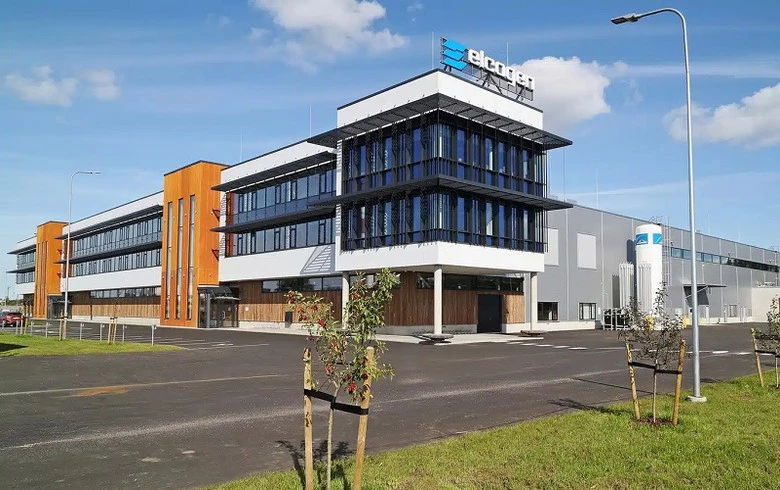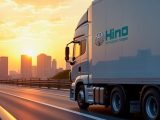
Elcogen’s Tallinn Plant Scales hydrogen production to 360 MW
September 19, 2025Elcogen, the Estonian pioneer in fuel cell technology, just flipped the switch on a game-changing plant in Tallinn. On September 16, 2025, they pulled back the curtain on ELCO I—a sprawling 14,000 m² factory nestled in Loovälja Industrial Park. With this expansion, Elcogen’s annual capacity jumps from a modest 10 MW to a hefty 360 MW, catapulting the company into Europe’s top tier of solid oxide fuel cell and electrolyser suppliers. The launch party drew over 300 folks from industry, finance, academia and government, driving home just how big this moment is—well beyond Estonia’s borders.
Scaling Up Europe’s hydrogen production
The timing couldn’t be better. With the EU’s 2025 Clean Industrial Deal and global calls to slash carbon footprints, the race for reliable, emission-free, sustainable energy solutions is on. This ramp-up in hydrogen production capacity comes courtesy of ELCO I’s advanced automation lines, modular assembly lanes and dedicated R&D labs, all wrapped in a green building envelope—think energy-efficient LED lighting, recovered process heat and living roofs. Elcogen figures they can cut manufacturing costs by as much as 60%, though outside verification is still pending.
Inside the plant, precision robots stack hundreds of ceramic cells with millimeter accuracy, while a digital twin platform tracks every move in real time. Quality control stations use X-ray tomography to inspect microstructures, making sure each stack hits exact performance targets. By borrowing lean manufacturing tricks from automotive lines, Elcogen can reconfigure its assembly process on the fly—a rare flexibility in the world of electrochemical manufacturing.
By building this capability in Estonia, Elcogen also helps Europe sidestep potential supply hiccups for ceramic materials and critical metals, whose prices have spiked thanks to geopolitical tensions. This local approach dovetails with the European Commission’s strategic autonomy goals and pushes the envelope on broad industrial decarbonization.
Plugging into Estonia’s clean-tech hub
Tallinn, a city that’s swapped its Hanseatic sails for digital spires, is fast becoming a clean-tech beacon. Sitting on the Gulf of Finland, it’s home to around 450,000 people and a buzzing innovation scene. ELCO I lives in Loovälja Industrial Park, just a short drive from the city’s tech campuses and research institutes. That proximity turbocharges collaboration with universities and taps into a workforce fluent in coding and engineering at digital speed.
Estonia’s famously streamlined regulations and e-governance platforms make it a breeze for companies like Elcogen to snag permits, score grants and pilot fresh ideas. A quick ferry to Helsinki unlocks direct access to Finnish industrial clusters, too. Plus, the country’s obsession with digitalisation spills into production: staff are pros at data-driven maintenance and advanced process control, chopping downtime and smoothing out output consistency.
A Leap for industrial decarbonization
The global push for net-zero rests on technologies that scale—and solid oxide systems are emerging as a secret weapon. Operating at 600–1,000 °C, SOFCs deliver higher electrical efficiency and make carbon capture more straightforward compared to lower-temperature cells. On the flip side, SOECs harness that same heat to slash the energy input needed for electrolysis, driving down the price of green hydrogen.
Crunch the numbers and it’s impressive: if all 360 MW of annual SOFC output were deployed in combined heat and power setups, they could offset up to 200,000 tonnes of CO₂ every year in heavy industries. And the SOEC modules, when paired with surplus renewable power, could churn out over 50,000 tonnes of green hydrogen annually—enough to fuel more than 1,000 buses or about 200 fuel cell trains.
Strategic Collaborations and Forward Momentum
Elcogen isn’t flying solo. They’ve built alliances with heavy hitters like AVL, TNO, Baker Hughes and Hyundai. ELCO I will host joint demo lines where academic teams can tinker with next-gen cell materials and system architectures. Word is they’ll pilot innovative ceramic coatings for extra durability and new stack designs aimed at rapid-response grid services.
One standout demo pairs Elcogen with a Scandinavian steelmaker to trial SOEC-produced hydrogen in direct-reduction processes. Another pilot with a German utility will showcase SOFC arrays swooping in to balance the grid during peak demand. Insights from these collaborations feed directly back to Tallinn’s R&D labs, where engineers keep refining materials and stack designs for better durability and a lower cost-per-kilowatt.
Even Estonia’s top brass rolled up to the inauguration—including the Minister of Climate—underscoring national pride in hosting a facility that cements the country’s place on Europe’s clean energy map.
What’s Next?
With assembly lines now humming, Elcogen plans to start shipping modules by the end of 2025. Early adopters include green steel projects in Scandinavia and off-grid EV charging stations in Central Europe. The target? Ramp up to 1 GW within the next two years—an ambitious goal, but one that looks doable given the factory’s size and automation strength.
On the international front, Elcogen is eyeing North America and Asia from mid-2026. Talks are already underway with Canadian energy firms keen on syncing SOEC systems to hydroelectric plants, while a consortium in South Korea is looking at the stacks for offshore hydrogen production. It’s a prime example of how scaling up local manufacturing can supercharge Europe’s competitive edge in the green hydrogen race.
Local Impact
The ripple effects on the local economy are clear. ELCO I is expected to add about 300 jobs to the region, beefing up Estonia’s clean-tech workforce. Beyond those positions, local suppliers of precision tooling, coating materials and logistics services will see their order books grow. The plant’s green roofs and rainwater harvesting setup could cut stormwater runoff by around 20%, while rooftop solar panels might provide up to 15% of the facility’s electricity during bright, sunny days.
About the Company
Elcogen was founded in 2001 and has spent over two decades honing its expertise in fuel cell technology with Solid Oxide Fuel Cells (SOFC) and Solid Oxide Electrolyser Cells (SOEC). Headquartered in Estonia with a registered office in the UK, the company employs roughly 150 people from more than 20 nationalities. Elcogen’s cells, stacks and modules find homes in everything from distributed power and grid services to industrial heat and Power-to-X solutions, all driving forward the vision of industrial decarbonization and a truly sustainable energy future.



 With over 15 years of reporting hydrogen news, we are your premier source for the latest updates and insights in hydrogen and renewable energy.
With over 15 years of reporting hydrogen news, we are your premier source for the latest updates and insights in hydrogen and renewable energy.